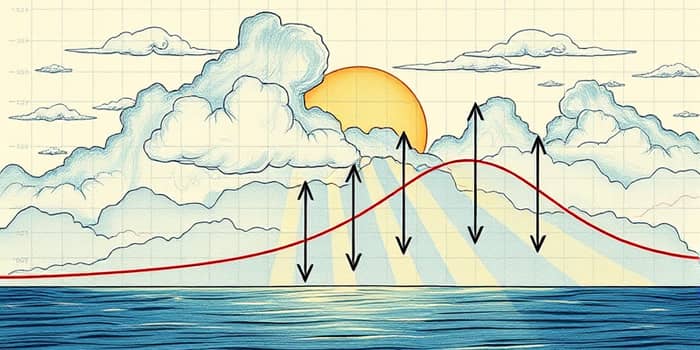
In the shifting landscape of global finance, the relationship between short and long-term interest rates has moved to center stage. Investors, policymakers, and businesses now observe a flattening yield curve with inversion concerns as U.S. Treasury spreads tighten. These dynamics reflect new equilibria in growth outlooks and price stability, shaped by central bank guidance and market sentiment. This article delves into the underlying forces driving spreads lower, examines the evolving trajectory of inflation expectations, and highlights practical steps for economic resilience in uncertain times.
Over the past year, the U.S. Treasury yield curve has gradually flattened, signaling a convergence of short-term and long-term borrowing costs. As of April 28, 2025, the spread between the 10-year yield at 4.29% and the 2-year yield at 3.79% stands at a modest 0.50%. Meanwhile, front-end bills such as the 1-month and 6-month Treasury bills show virtually no differential, and the implied Fed Funds rate appears inverted by 70 basis points relative to the 2-year note. These shifts underscore growing alignment between market pricing and central bank rate projections.
The yield curve’s flatness often precedes shifts in economic growth and inflation trajectories. Investors interpret a narrowing spread as a cautionary signal, suggesting that broad-based decline in inflation expectations may persist and that future rate increases are unlikely. The inverted segments at the front end highlight expectations that monetary easing could follow if growth softens or inflation dips below target thresholds.
Inflation expectations are pivotal drivers of bond yields and consumer decisions. According to the New York Fed’s June 2025 survey, median inflation expectations have eased across all horizons: from 3.2% to 3.0% over one year, 3.0% to 2.8% over three years, and 2.6% to 2.5% over five-year periods. Uncertainty around these forecasts has also diminished, indicating growing confidence in moderating price pressures.
These shifts reflect improved consumer sentiment regarding labor markets and household finances. They also align with the Federal Open Market Committee’s projection of roughly 3% inflation in 2025. The combination of Fed’s more accommodative policy stance and favorable base effects from last year’s high prices helps explain this downward trend.
Central banks in major economies have responded to evolving conditions with cautious easing. The Federal Reserve initiated rate cuts in September, trimming rates by 50 basis points, and signaled a potential for another 85 to 100 basis points of cuts by year-end. Simultaneously, balance sheet runoff has been slowed, with redemption caps reduced from $25 billion to $5 billion monthly. These actions demonstrate a deliberate shift to a moderating price pressures and growth trends approach, balancing inflation control with support for economic expansion.
Across the Atlantic, the European Central Bank and Bank of England anticipate comparable easing cycles, expecting up to 148 basis points of rate reductions in the Euro area. In contrast, the Bank of Japan grapples with upward inflation pressures, nudging its policy toward gradual rate normalization. This divergence highlights the complex interplay of domestic conditions and global policy coordination—or the lack thereof.
As interest rate spreads narrow, borrowing costs become more predictable, but the specter of future rate cuts introduces a degree of uncertainty for long-term planning. Companies may recalibrate capital investments, focusing on efficiency improvements rather than expansion, while consumers could seize opportunities to refinance debt or lock in rates before expected declines. The cautious optimism in inflation outlooks offers room for confidence but also emphasizes the need for readiness against sudden market swings.
The risk of stagflation—stagnant growth coupled with persistent inflation—has receded with the downward revision of 2025 GDP growth forecasts from 2.1% to 1.7%. Yet, policymakers remain vigilant about tariff pressures and fiscal deficits that could reignite price tensions. Navigating this landscape requires adaptive strategies and a clear-eyed view of both downside and upside risks.
In an environment defined by converging yields and cooling expectations, market participants must remain agile. Embracing narrowing spreads reflect increased market confidence can inform portfolio rebalancing, debt management, and cost forecasting. To foster resilience, focus on diversified strategies, stress testing, and scenario planning.
These steps help organizations and individuals anticipate changes rather than merely react, turning uncertainty into a competitive advantage.
As the financial world adapts to narrower interest rate spreads and softer inflation signals, the opportunity for informed action grows. By blending vigilant monitoring with strategic planning, stakeholders can align their decisions with evolving market realities. Ultimately, staying prepared and flexible offers the best defense and opportunity when navigating the currents of a dynamic economic cycle.
References













